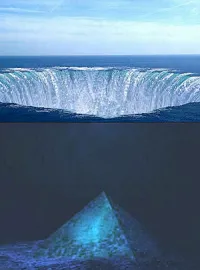
A shock wave is a type of pressure wave that propagates through a medium, such as air or water, at supersonic speeds. It is characterized by a sudden and significant increase in pressure, temperature, and density, followed by a rapid decrease. Shock waves can be generated by various sources, including explosions, earthquakes, and high-speed vehicles.
Medical Applications of Shock Waves:
Shock waves have been used in medicine for several decades to treat various conditions, including kidney stones, tendonitis, and bone fractures. Shockwave therapy, also known as extracorporeal shock wave therapy (ESWT), uses high-energy shock waves to stimulate healing and reduce inflammation. Studies have shown that shockwave therapy can be effective in treating musculoskeletal conditions, such as plantar fasciitis and Achilles tendonitis.
Engineering Applications of Shock Waves:
Shock waves have numerous applications in engineering, including:
Aerospace Engineering: Shock waves are used to study the behavior of high-speed vehicles, such as aircraft and spacecraft.
Civil Engineering: Shock waves are used to study the behavior of structures under explosive loads, such as earthquakes and blasts.
Mechanical Engineering: Shock waves are used to study the behavior of materials under high-pressure and high-temperature conditions.
Environmental Impact of Shock Waves:
Shock waves can have significant environmental impacts, including:
Noise Pollution: Shock waves can generate high levels of noise, which can be harmful to humans and wildlife.
Vibration: Shock waves can cause vibrations, which can damage structures and disrupt ecosystems.
Air Pollution: Shock waves can generate air pollutants, such as particulate matter and nitrogen oxides.
Shock waves are a complex phenomenon with various applications and impacts. While they have been used in medicine and engineering for several decades, their environmental impacts are still not fully understood. Further research is needed to fully understand the effects of shock waves and to develop strategies to mitigate their negative impacts.
Dangerous shock wave examples that highlight their powerful and destructive nature:
- Nuclear Explosions
Shock Wave Impact: Nuclear detonations generate massive shock waves capable of flattening buildings and causing widespread destruction. The shock wave from a nuclear explosion can travel at supersonic speeds, causing extreme pressure and heat, and can be felt miles away from the blast site.
Example: The Hiroshima and Nagasaki bombings in 1945, where the shock waves caused catastrophic damage beyond the immediate blast radius.
- Supersonic Aircraft Sonic Booms:
Shock Wave Impact: When a supersonic aircraft (e.g., a fighter jet or spacecraft) breaks the sound barrier, it generates a shock wave, known as a sonic boom. This can create loud noises and vibrations that can shatter windows and cause structural damage.
Example: Concorde and other military aircraft generating shock waves when flying at supersonic speeds have occasionally caused damage to buildings and led to noise complaints.
- Volcanic Eruptions:
Shock Wave Impact: Explosive volcanic eruptions produce shock waves that can travel through the atmosphere and even around the world. These shock waves can damage infrastructure, knock down trees, and trigger secondary hazards like landslides or tsunamis.
Example: The Krakatoa eruption in 1883 produced shock waves that traveled several times around the globe and caused massive destruction.
- Asteroid Impacts:
Shock Wave Impact: The impact of a large asteroid or meteor can generate a shock wave capable of vaporizing matter at the impact site and causing widespread damage over large areas.
Example: The Tunguska event in 1908, when a meteor exploded in Siberia, generated a shock wave that flattened over 2,000 square kilometers of forest.
- Chemical Explosions:
Shock Wave Impact: Large chemical explosions, such as those involving industrial accidents, generate intense shock waves that can obliterate nearby structures and lead to fatalities.
Example: The Beirut explosion in 2020, caused by improperly stored ammonium nitrate, produced a powerful shock wave that damaged buildings miles away and resulted in over 200 deaths.
- Earthquakes:
Shock Wave Impact: Earthquakes produce seismic shock waves that travel through the Earth’s crust, causing buildings to collapse, triggering landslides, and leading to widespread destruction.
Example: The 2004 Indian Ocean earthquake and tsunami, where the seismic shock waves led to a massive tsunami that caused over 200,000 deaths.

